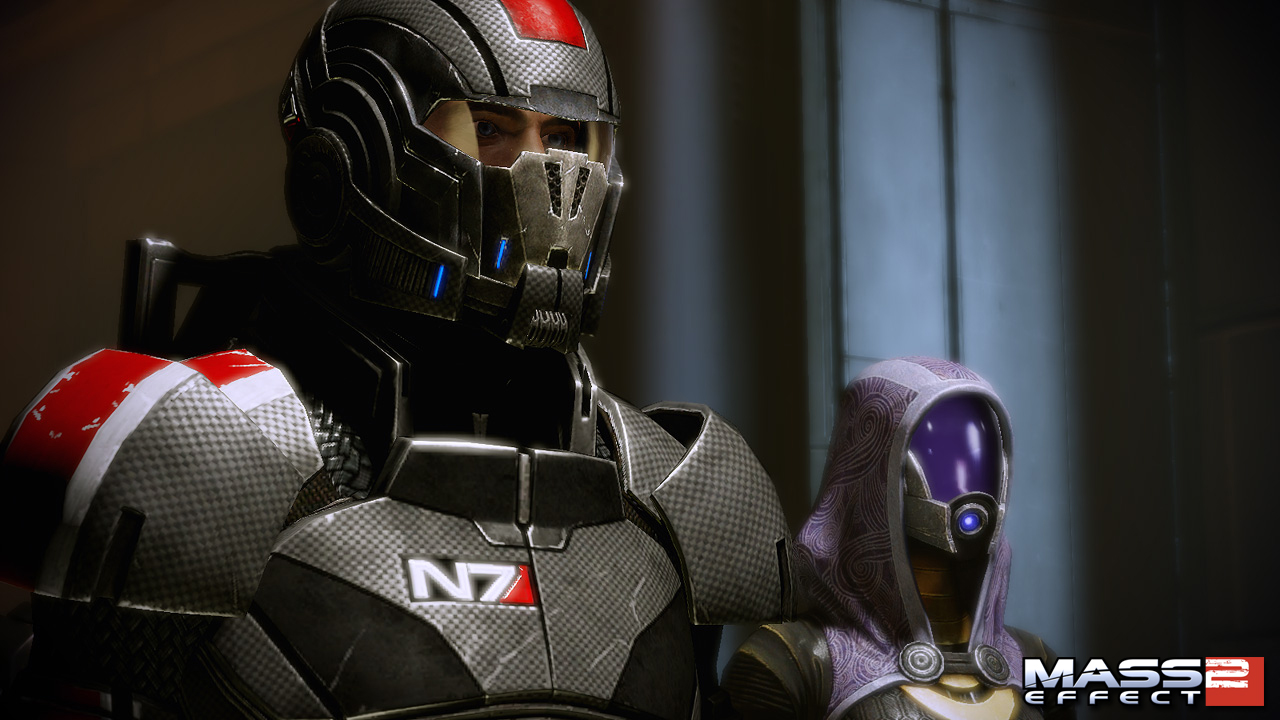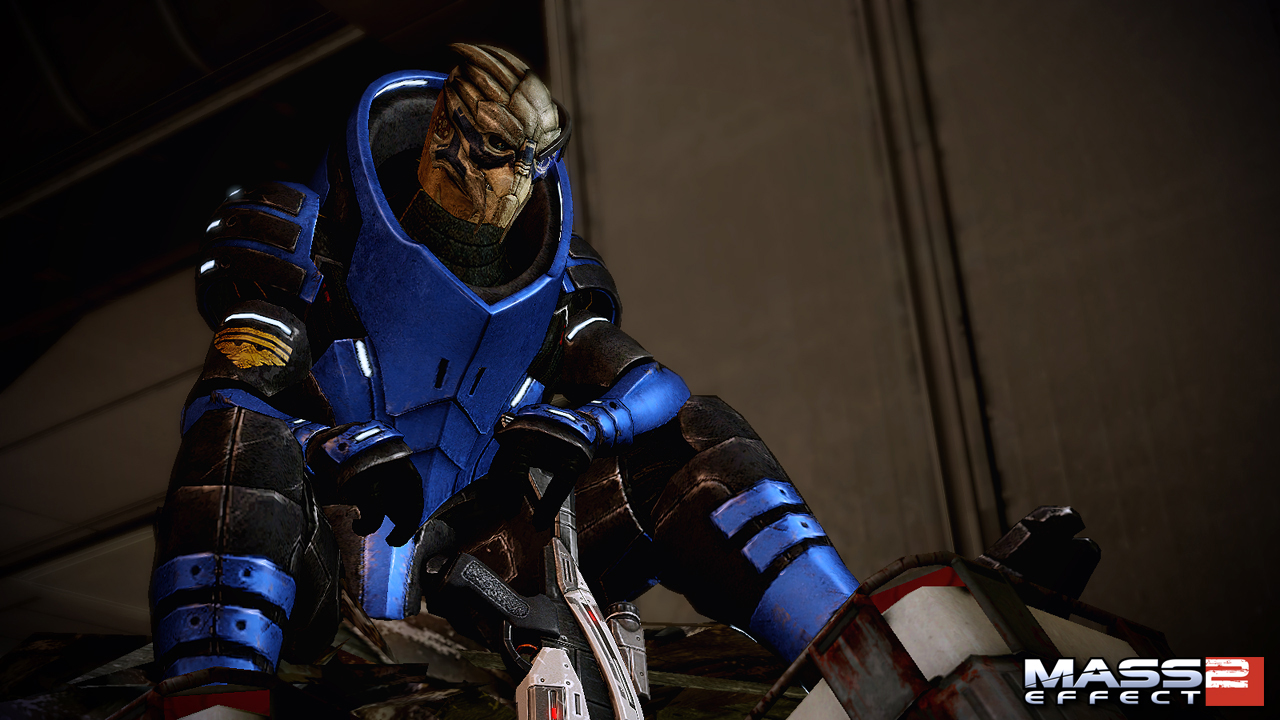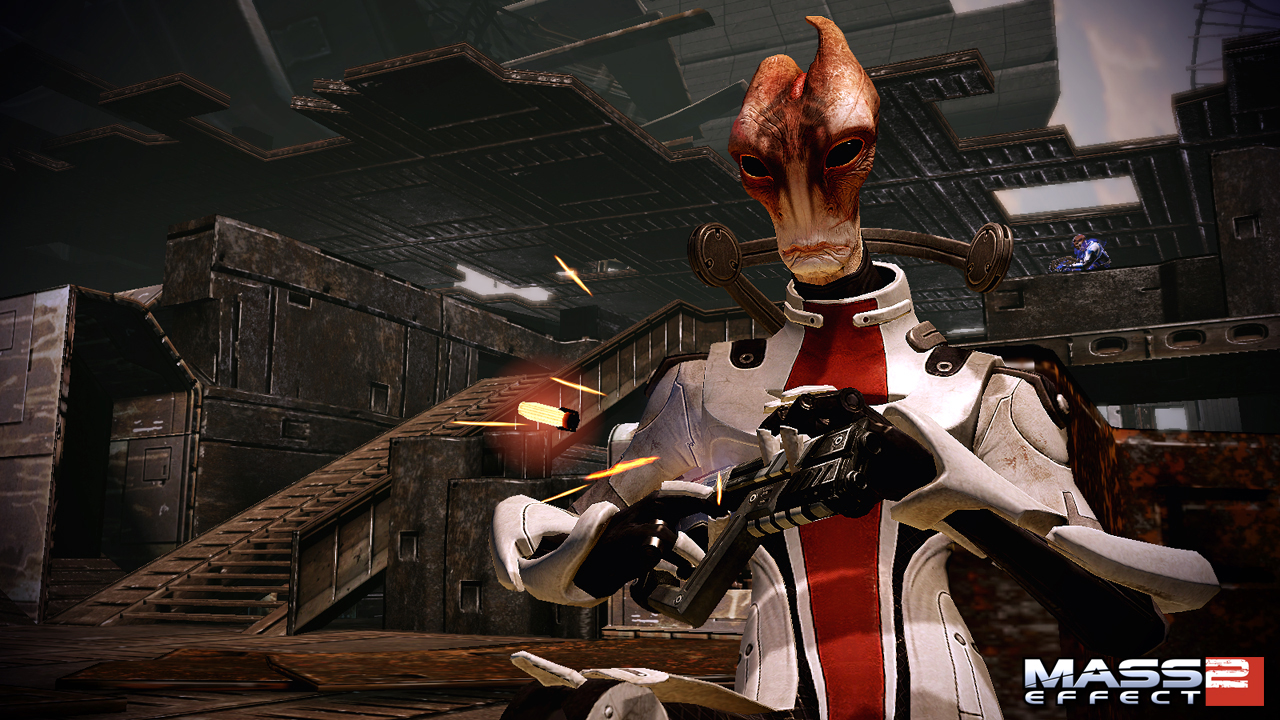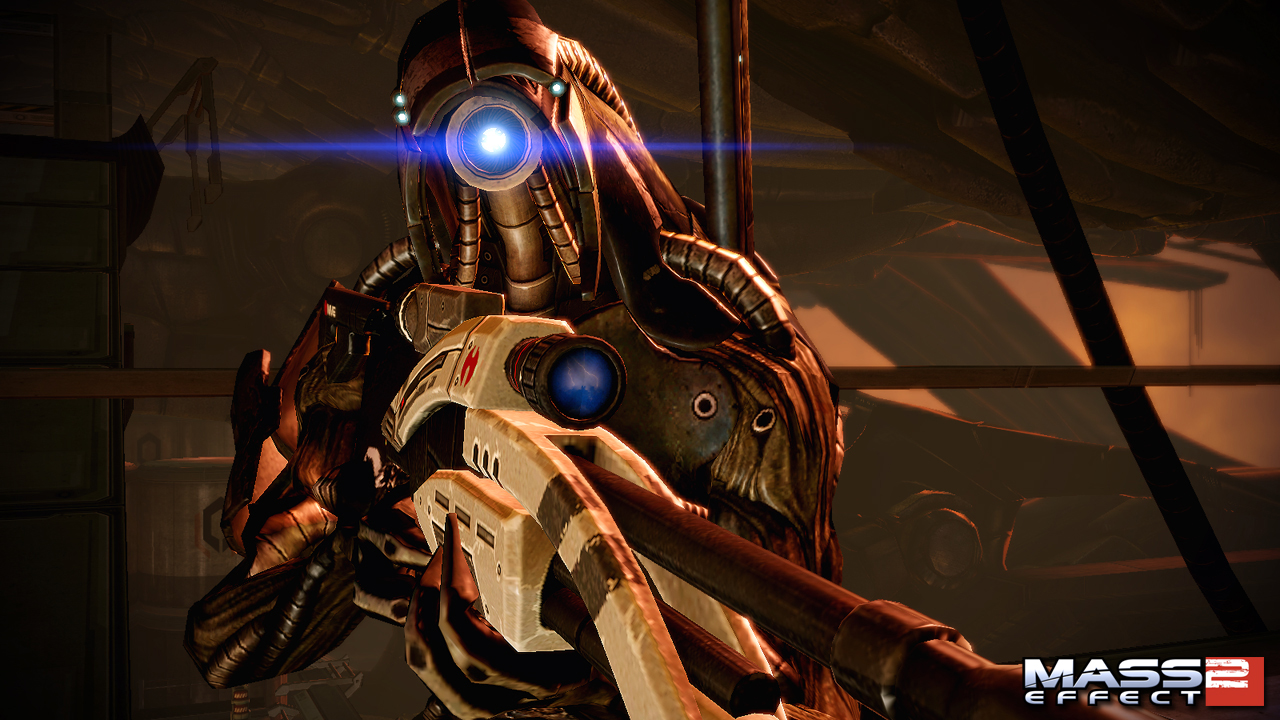In late 2009, Casey Hudson told a studio-wide meeting at BioWare’s Edmonton, Canada base that Mass Effect 2 would be the company’s best game yet and, quite possibly, the greatest videogame ever made, according to one developer present at the time. Few people would put it top of an all-time list, but you wouldn’t be laughed at for arguing it was BioWare at its peak.
The studio hasn’t topped Mass Effect 2 since it came out 10 years ago, and the failures of both Andromeda and Anthem have left it in crisis. But the Mass Effect series may yet prove BioWare’s saviour. A Kotaku report from November suggested a new Mass Effect game was in the works under project director Michael Gamble, who sent a tweet the same month asking fans: “Where do you want Mass Effect to go in the future?”
Gamble should look to Mass Effect 2, adored by both fans and critics, for answers. To me, it felt like the most accessible version of the character-driven storytelling the studio had honed over a dozen years, starting with the companions in 1998’s Baldur’s Gate. Mass Effect 2’s lore was as dense as Mass Effect 1’s, but BioWare, with an expanded team packed with new hires, found another level of polish. You can play it today without getting frustrated, whereas Mass Effect 1 feels creaky and unkempt.

But there are more fundamental reasons why it’s the best of the trilogy, according to some of the developers who helped make it. It was partly luck, partly timing, but mostly by design; it was BioWare pivoting to a new development approach that forced writers, technical designers and programmers to work closer than ever before, while allowing a new crop of hungry developers to mix with old heads who had helped establish the universe.
The strength of BioWare’s writing hasn’t, historically, been clever plots or punchy dialogue. Mass Effect 2’s story is standard sci-fi fare: investigate a threat to the galaxy, assemble a strike team, and try to save the day. The dialogue can feel stiff—far too formal for a ragtag group of mercenaries. “I’m just interested in what makes you tick,” says Commander Shepard to Jacob Taylor early on, sounding like an HR rep in an awkward job interview.
Mass Effect’s characters rarely reveal anything meaningful about our own world, either. One former BioWare writer, who wishes to remain anonymous, argues that the series’ characters lack depth on repeated playthroughs. “Take away the spaceships, lasers, aliens, and robots, and there's not much left.”
But what makes Mass Effect 2 stand out is that it plays to the strengths of BioWare’s writers better than either Mass Effect 1 or Mass Effect 3. The studio is known for bringing together characters with conflicting desires and vivid personalities that unfurl over the course of an adventure, and letting you dig deeper into those characters’ backstories than most developers allow. You might not find anything profound beneath the surface, but that process—the repeated chances to find out more about them—builds an undeniable connection. Mass Effect 2 puts this interaction center stage. For its first two-thirds, it’s entirely character-led, and the overarching plot is somewhat irrelevant.
“Every area you visit, you're there because you want to recruit a companion, or deal with something from a companion's earlier life that they need resolved,” says Chris L’Etoile, former BioWare writer, now senior narrative designer at Cold Iron Studios. “That makes the bulk of the game operate on the level of personal stakes. I think that's what people respond to about Mass Effect 2. It's ultimately not about exotic locations or entire civilizations, it's about a handful of people you get to know extremely well. It plays to BioWare's traditional strength of memorable NPC companions, going back to Minsc and Viconia [from Baldur’s Gate].”
Chris Hepler, a former BioWare writer and now lead creative writer at Seasun Games, underlines the point. “I cannot stress the character aspect enough: there have been psychological studies [that show] that when people watch or play entertainment, what sticks in their minds most are the characters rather than the plot,” he says. “Mass Effect 2 had the benefit of retaining all the core writing team from Mass Effect 1 as well, so the characters got to fulfil the unspoken promises of Mass Effect 1. If you liked Tali, you got to see her home fleet. If you noticed the salarians didn't all think fast and talk fast the way the Codex said, you got to meet Mordin, who epitomized that stereotype.”

Garrus's emergence as a fan-favorite is a case in point. He was introduced in the first game, but doesn’t come alive until the second. No longer simply in awe of Shepard, he’s developed motivations and a newfound confidence in his own competence, and is more willing to tease and challenge his commander, which leads to a more nuanced relationship. On his new facial scars, he says to Shepard: “Ah, probably for the best. They were all ignoring you and hitting on me. 'Bout time you got a fair shot."
It helps that there are simply more characters in Mass Effect 2, so, by the law of averages, you’re more likely to find a handful that click. “Players just had a little more opportunity to find that character that really spoke to them,” says John Ebenger, who worked as a cinematic designer at BioWare for ten years, and is now cinematic director at Respawn Entertainment. “I know for myself it was Mordin. I worked on him extensively, and to me he's still one of the greatest BioWare characters of all time.”
In Mass Effect, only three characters had companion quests: Garrus, krogan mercenary Urdnot Wrex and quarian Tali'Zorah nar Rayya. In Mass Effect 2, every squadmate has one. BioWare was banking that this enforced proximity would make you invest in their stories, and by presenting you with tough choices that define those character’s futures, it paid off. Even mostly unloved characters, such as bounty hunter Zaeed Massani, take on new life in their companion quests. His mission doesn’t provide a great moral dilemma (you have to choose between killing one of his old partners in crime and saving a facility full of innocents), but you leave understanding, in Shephard’s words, “what makes him tick”.

The character-driven structure stands in contrast to both Mass Effect 1 and Mass Effect 3. The first game is character-heavy, but it must also establish the trilogy’s stakes and the universe, so its puts more emphasis on setting, as L’Etoile explains. “You go to a place, and run through a story about that place. Events do tie in with the main plot, but each is primarily local and self-contained—it's the story of the Thorian on Feros, of the secret labs on Noveria.”
Mass Effect 3 is plot-heavy by necessity. So great is the existential threat of the Reapers that the characters are strung along by the story, rather than driving it themselves. As Hepler puts it, “in both Mass Effect 1 and Mass Effect 2, the galaxy isn't on fire. Mass Effect 3’s threat is so great that the entire galaxy is in fight-or-flight mode… it makes no sense to go faff around with somebody's backstory.”
The reasons Mass Effect 2 stands out go beyond character. RPGs stretching over tens of hours can feel overwhelming, but Mass Effect 2 broke its story down into half-hour chunks—recruitment and companion missions—that feel almost like mini movies. “There's a threat out there, go and collect your Dirty Dozen squad mates, and then attack that threat in a suicide mission at the end, I just think that is a great format for a game,” says Ebenger. “You can wrap [missions] up in a shorter period of time… it was very digestible, and didn't leave you with a lot of cliffhangers. I just got a lot of satisfaction out of that format.”
Each mission is more of a spectacle than an average Mass Effect 1 quest. BioWare hired plenty of new staff— Ebenger says he was one of around 40 developers brought in—and put a greater emphasis on cinematics, doubling the number of cinematic designers. “[We took] conversations from being just two people standing in front of each other to some pretty elaborate cinematic sequences… we really upped our game as far as what we could do animating the characters with the assets we had,” he says. “I think that really had an impact on how the players connected with those characters, as they [felt] much more alive.”
Writers also worked closer than before with other parts of the development team, L’Etoile says. For Mass Effect 1, writers would sit down as a group and plot out stories and levels, “like we were writing D&D Adventure Modules”, which would then be handed to technical developers and the cinematics team. For Mass Effect 2, the development team worked in “pods”, with writers grouped with technical designers, animators, environment artists and QA testers. It “made more room for other perspectives,” L’Etoile says. “The reason Legion's loyalty mission had a tower defence fight with turrets was because Keith Hayward, the tech designer, had mentioned Unreal's Kismet scripting was powerful enough that he thought he could do that without any external programming support. So we worked his idea into the level.”

Mass Effect 2 also benefited from Mass Effect 1’s flaws: removing or replacing them would instantly make a better game. Mass Effect 2 had fewer obvious defects for the Mass Effect 3 team to work on, a fact Casey Hudson alluded to in a 2012 interview with Gamasutra. “Mass Effect 1 was well-received as well—it's a 91 Metacritic game—but it was the kind of game that I think had a reputation of being a flawed masterpiece. So with every bit of incredible acclaim that it would get, it also came with caveats about very specific things that people wanted to improve,” he said.
For Mass Effect 2, “there were so many positives about it. We had to take a different approach and design a different format… It became more about [interpreting] qualitative things in the feedback, instead of [examining] a long list of things we had to improve. We then would fine-tune things. So it became a process of fine-tuning versus overhaul, which is kind of a different approach than we had to do for going from Mass Effect 1 to 2.”
The clunky combat in Mass Effect 1 was streamlined, and built around a cover system. Mass Effect 1 had cover shooting, but it was only introduced late on and felt “half-baked”, Ebenger says. By removing the planetary exploration in the Mako vehicle and cutting out needless side quests, designers could focus on building scenarios around squad-based combat. “I think that was a really, really smart move.”
Concentrating on the bits that matter is the main advice Ebenger would give any developer who works on the next Mass Effect game, he says. Hepler echoes this:“Don't add size just for the sake of replay or exploration—you don't need the biggest game in the world, you need a game with a high entertainment-to-downtime ratio,” he says.
He also advises BioWare to “keep your staff from the last instalment”. Mass Effect 2 brought on plenty of new staff, but they were able to learn from veterans of the series who ensured promises from Mass Effect 2 were fulfilled. “Talented new people can be great, but they will have more blind spots, and miss more chances for ludonarrative synergy, which will show up in the work,” Hepler says.
On this advice, BioWare may struggle. Key staff from Mass Effect: Andromeda have left the company, including project leader Aaryn Flynn, lead designer Ian S. Frazier, and cinematic director Ken Thain. 2019 saw a number of influential developers leave the company, including its head of live service Chad Robertson, Anthem lead producer Ben Irving, and Fernando Melo, lead producer on BioWare's upcoming Dragon Age game.
If ever there was a time for BioWare to reassess its approach to Mass Effect, it’s now. The brilliance of Mass Effect 2 suggests the company should be looking to its past, as well as to its future.
from VICE https://ift.tt/39huWUx
via cheap web hosting
No comments:
Post a Comment